
Studying Mid-Century Utopias in Davis
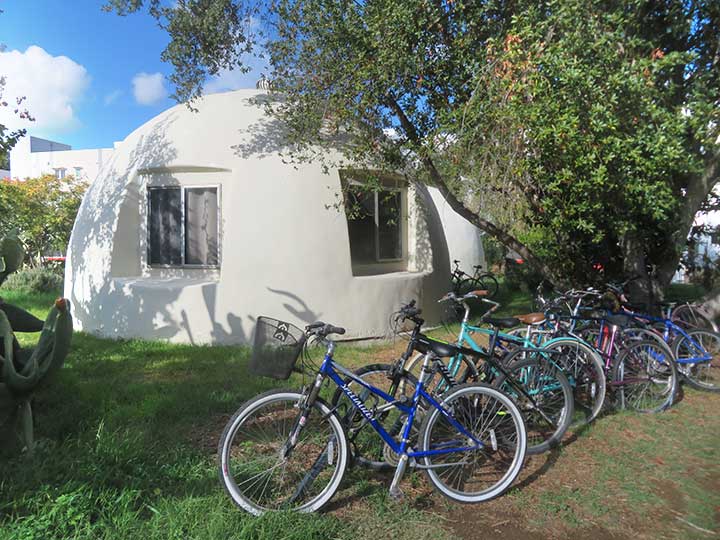 |
Many dreamers spend a lifetime seeking their own perfect world. Others stumble into it by chance. One such seems to be Simon Sadler who, with his family, found a sort of utopia in the Central Valley town of Davis.
“I’m sort of a radical inside my head,” says Simon, who chairs the department of design at UC Davis, the only such department in the UC system, “but I don’t particularly want to live a radical lifestyle.”
Instead, this British art and design historian whose research on the 1960s and ‘70s, “that sort of Cold War modern era,” focuses on radical experiments in architecture and living, has been raising a son and daughter with his wife, Jan Wagstaff, in a Streng home that’s an easy bike ride to campus.
The home’s glass-walled spaces and atrium-like verandah may not resemble the more radical experiments in visonary cities and communal living that Simon studies, but he sees the home as existing on a kind of utopian continuum.
He sees California too, with its claim to set the pace for climate change action, among other fields, as a bit of a utopian experiment. Davis also qualifies for several reasons, including the city's let’s-all-ride-bikes-everywhere ethos.
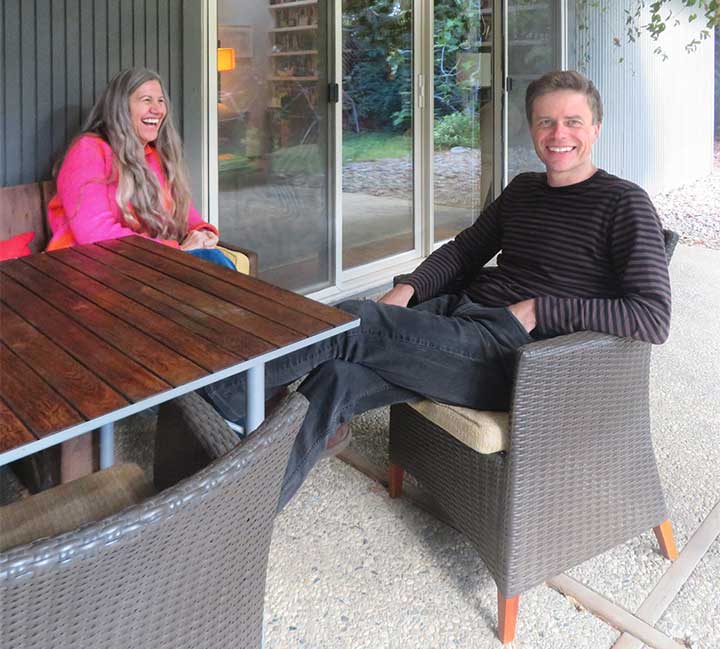 |
Were Eichler homes, which served as models for builders Jim and Bill Streng, utopian? Simon thinks so.
“It’s about trying to find a certain way of living with each other,” he says of Joe Eichler’s quest. “That we want to be good neighbors…Joe Eichler was looking for integrated communities. That’s something that really is sort of utopian, isn’t it?”
Simon, who grew up Britain, was drawn to alternative living in part due to an experience of living in “basically a squat” while working as a bike messenger in London.
For 25 years he has been studying such radical design thinkers as the British Archigram architects, who imagined vast mega-cities of pods that could 'plug in' to larger structures, "stacked into profiles that, far from being repetitive, bordered on the picturesque,” he wrote.
He's written too of the French neo-Marxian Situationists, the 1960s commune Drop City in Colorado, and on such topics as 'Mandalas or Raised Fists? Hippie Holism, Panther Totality, and Another Modernism,' and 'How and When was Architecture Socially Engaged?'
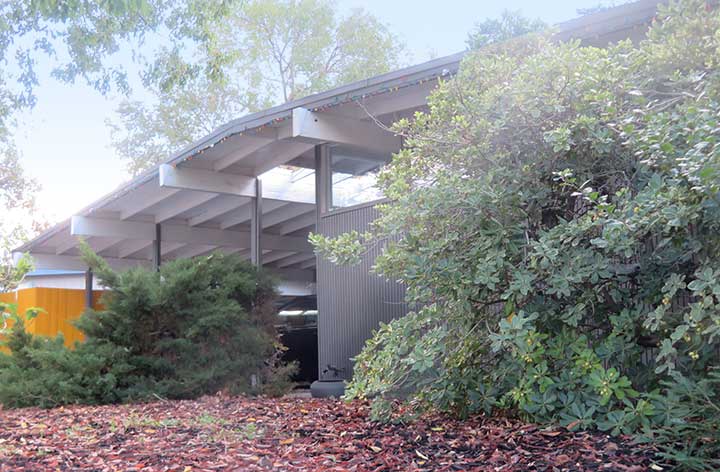 |
“One of the things that I try to show,” Simon says, “is how designers have always tried to serve two possibilities at once. They’ve always wanted to serve the design industry as it is, like housing and industrial design.
“But they’ve always also wanted to change the world a bit.”
“When you think about postwar architecture, you might think about suburbia, you might think about experiments like this [Streng homes], experiments with mid-century modernism. You might think about Charles and Ray Eames and the Case Study homes,” he says.
“But one of the things that I became interested in as a graduate student was, what were the kinds of radical alternatives? And I think that still remains of interest to students now. They’re born into a world of social and environmental crisis. They get into design. They get into my department asking two things: one, can I still get a job; and two, can I change the world?
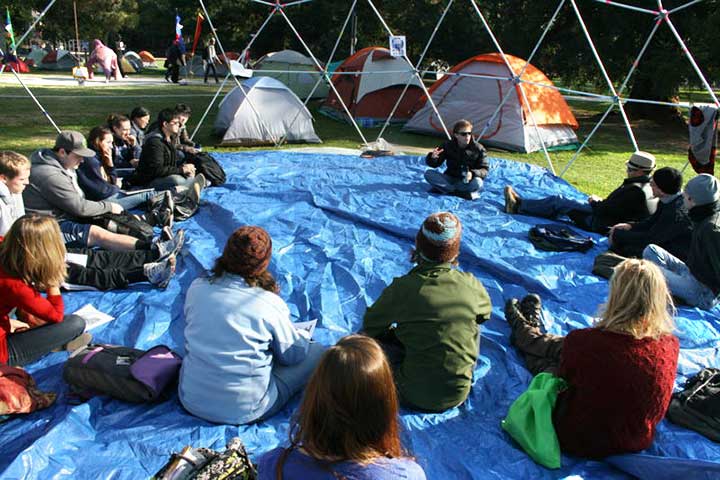 |
Davis is a perfect place to contemplate the latter question, Simon says, noting that the city pioneered bike lanes and the modern farmers market, and is home to several well-known experiments in alternative living (in addition to the Streng tracts).
There’s Village Homes, with mini-farms along greenbelt paths, “a prototype of of eco living not only in the States, but all over the world,” Simon says.
And then there are the Baggins End Domes, cooperative student housing from 1972 that is “super radical, really. And even now if you go there, they have this co-operative farm associated with it.”
When the university thought of ripping the place down some years ago, Simon was among those who rallied to save it.
How did a scholar of radical thought from Britain end up at a former agriculture school in the Sacramento Valley? Well, it was a bit of a gamble.
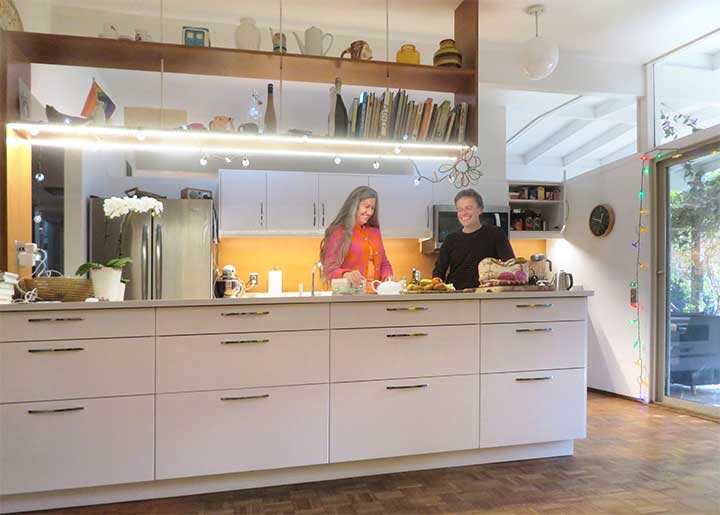 |
“I was keen to move on from the university I was working at in Britain,” Simon says. He and Jan had a new baby and decided “to make the jump.”
“I resolved that I would take the first available job in my area, anywhere in the world. Just throw those dice.”
UC Davis made an offer and Simon, a keen cyclist, accepted, knowing nothing about the place – not even its obsession with bikes. Nor did he know about Davis’s amazing art scene, or the value that comes from the city being on the cultural periphery – which makes it easier for experiments to happen.
Simon and Jan planned to stay two years in Davis. It’s been 20. It’s been a good fit.
“One of my research interests is around counterculture and the like,” Simon says. “So this is actually a bit of a countercultural enclave.”
- ‹ previous
- 546 of 677
- next ›



